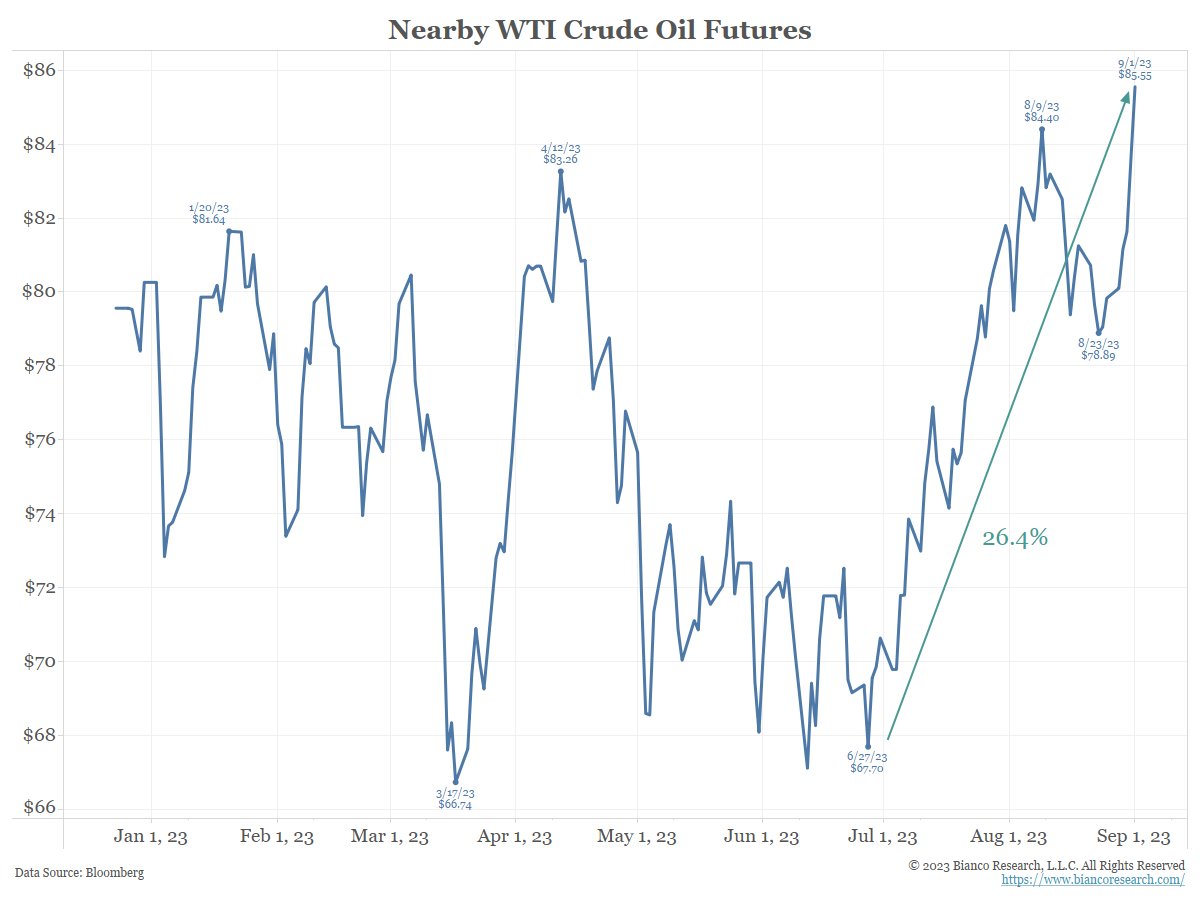1/8
🧵on where the bond market stands.
----
Recall that last year was the worst total return year for the bond market in history.
Here is a chart back to 1801 to remind everyone how bad last year was.
🧵on where the bond market stands.
----
Recall that last year was the worst total return year for the bond market in history.
Here is a chart back to 1801 to remind everyone how bad last year was.

2/8
So naturally, global fund managers turned very bullish for 2023.
Here are the August BofA Global Fund Manager Survey results showing they are more bullish on bonds than at any time in 20+ years of this survey.
Mean Reversion is a power drug on Wall Street.
So naturally, global fund managers turned very bullish for 2023.
Here are the August BofA Global Fund Manager Survey results showing they are more bullish on bonds than at any time in 20+ years of this survey.
Mean Reversion is a power drug on Wall Street.

3/8
So far it is not quite working out the way they hoped.
This is a chart of the most popular bond market benchmark, the Bloomberg US Aggregate Index
YTD (through Sept 21) AGG is DOWN -0.59%. This is the 8th worst year ever (out of 47 years)
So far it is not quite working out the way they hoped.
This is a chart of the most popular bond market benchmark, the Bloomberg US Aggregate Index
YTD (through Sept 21) AGG is DOWN -0.59%. This is the 8th worst year ever (out of 47 years)

5/8
Here are the total returns for the yield curve through Sept 21.
The longer the duration (maturity), the worse the return. Everything longer than 5-year is down on the year.
Here are the total returns for the yield curve through Sept 21.
The longer the duration (maturity), the worse the return. Everything longer than 5-year is down on the year.

7/8
What will it take for bonds to rally (yds fall)?
Something "bad" to happen (see March when all the banks failed in the same week). You can hedge this by shorting stocks.
A capitulation on the bond bull thesis and recognition we have a long-term "sticky" inflation problem.
What will it take for bonds to rally (yds fall)?
Something "bad" to happen (see March when all the banks failed in the same week). You can hedge this by shorting stocks.
A capitulation on the bond bull thesis and recognition we have a long-term "sticky" inflation problem.
8/8
Until one (or both) of these happens, bonds will be volatile and stay under pressure.
Until one (or both) of these happens, bonds will be volatile and stay under pressure.
• • •
Missing some Tweet in this thread? You can try to
force a refresh

 Read on Twitter
Read on Twitter


















